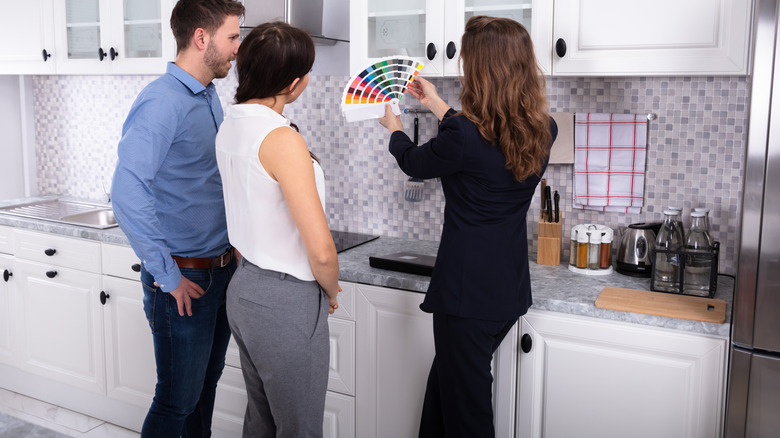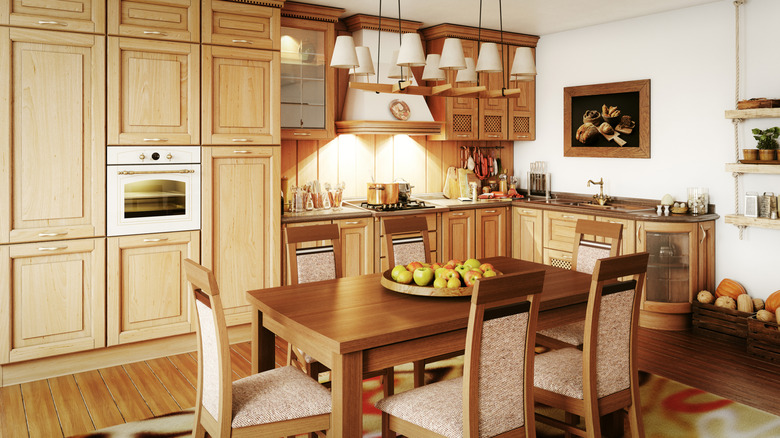The Quirky Kitchen Style No One Ever Expected To Trend Again
The Tuscan kitchen trend was a hallmark of the 1990s and early 2000s, reflecting a time when cozy kitchens were dominated by warm colors, touches of old Europe, and lots of wood. While its reign in kitchen design soon gave way to whiter and brighter kitchens overall, the Millennial generation's nostalgia for the kitchens of their childhood may be bringing this style back into focus today, with many great options for incorporating a bit of Tuscan style to your kitchen.
Whether you want to create the rustic and homey feel of a childhood kitchen in your home, or just want to incorporate an Italian countryside ambiance into your existing kitchen in small doses that capture the style, there are numerous ways to make it happen. By focusing on materials, finishes, and elements that capture the Tuscan vibe, you can add coziness to your kitchen that evokes an older era (whether its old Europe or the late 1990s is up to you!)
Bringing in Tuscan style touches
At the heart of the Tuscan kitchen ethos is the idea of both casualness and elegance. The style embraces a richly layered and eclectic lived-in feeling that reflects European countryside life, including elements like visible cookware and open shelving, often filled with jars, wine racks, oil bottles, and rustic wooden cutting boards and bowls. Cookware and dishware embodies materials that look well-loved and well-used. Popular hardware and fixture materials include wrought iron and burnished copper that look centuries-old.
Modern Tuscan kitchen designs you can replicate typically involve reclaiming some of the same accents that made the Tuscan style famous, like an abundance of texture through materials like natural stone, wooden beams, and exquisite warm-toned tile-work. While there is still a rustic and weathered charm to the painted walls, paint techniques like sponge painting, rag rolling, and lime washing employ more neutral and light shades than decades ago when the style favored deeper golds, oranges, and browns. Popular decorative accents in these spaces include motifs like grapes, fruit, and olive leaves and trees, but used a bit more sparingly than before, with the busier dark and richly patterned granite or marble countertops giving way to simpler stone counters or the rustic look of all-wood. The warmer and dark-toned cabinets are gone and replaced by richer medium and neutral woods.

